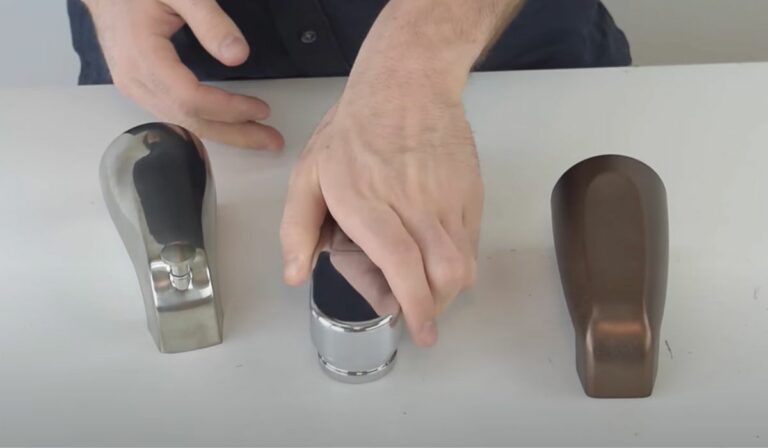How To Open Wash Basin Stopper
If your wash basin stopper is stuck or not functioning properly, knowing how to open it can save you time and money. Whether you’re dealing with a pop-up, lift-and-turn, or push-and-pull stopper, this guide will walk you through identifying your stopper type, opening it safely, and handling common issues. Mastering these steps will keep your basin draining smoothly and help you avoid unnecessary plumbing calls.
Understanding Different Types Of Wash Basin Stoppers
Identifying Your Basin Stopper Type
First things first: what kind of stopper do you have? Wash basin stoppers typically come in four main types, each with its own mechanism:
- Pop-Up Stopper: Usually operated by a lever or rod behind the faucet. The stopper pops up or down to open or close the drain.
- Lift-And-Turn Stopper: You twist the stopper’s cap counterclockwise to lift and open it: clockwise to close.
- Toe-Touch Stopper: Activated with a tap using your toe or finger to toggle between open and closed.
- Push-And-Pull Stopper: You push down to close and pull up to open, similar to lift-and-turn but without twisting.
Identifying yours helps you approach the next steps correctly. If you’re unsure, look closely at the stopper itself and check how it operates when you want to drain the basin.
Tools You’ll Need To Open A Wash Basin Stopper
You won’t need a tool arsenal, but a few handy items can make the job easier:
- Adjustable wrench or channel-lock pliers: For loosening nuts under the basin.
- Screwdriver (flathead or Phillips): Some stoppers have screws that need to be removed.
- Bucket or bowl: To catch any water when you detach components.
- Old toothbrush or small brush: Useful for cleaning.
- Gloves: To keep things sanitary and improve grip.
Gather these before starting, being prepared means less hassle and a smoother job.
Step-By-Step Guide To Opening Common Stopper Types
How To Open A Pop-Up Stopper
- Locate the lift rod behind the faucet: it’s connected to a horizontal pivot rod under the basin.
- Place a bucket under the plumbing to catch drips.
- Unscrew the retaining nut securing the pivot rod and gently pull it out.
- Lift the stopper from the drain opening.
How To Open A Lift-And-Turn Stopper
- Twist the stopper counterclockwise to lift and open it.
- If stuck, look underneath the stopper for a small screw, unscrew it to remove the stopper.
How To Open A Toe-Touch Stopper
- Press the stopper to toggle to the open position.
- To fully remove it, twist the stopper counterclockwise.
- If it won’t budge, check for a hidden screw or retaining clip at the base.
How To Open A Push-And-Pull Stopper
- Pull up on the stopper to open it.
- To remove, twist the stopper counterclockwise until it releases.
- If there’s a locking screw, use a screwdriver to loosen it before twisting.
Following these steps carefully prevents damage and helps you access the drain for cleaning or repairs.
Cleaning And Maintenance After Opening The Stopper
Once you’ve opened the stopper, it’s a perfect chance to clean away gunk and debris that clog the drain over time. Use an old toothbrush and mild detergent to scrub the stopper itself.
Check inside the drain for hair, soap scum, or mineral build-up, remove anything you find using gloves or a small tool.
After cleaning, rinse all parts thoroughly before reassembling. Proper maintenance keeps your basin draining efficiently and avoids unpleasant odors or slow drainage problems down the line.
Troubleshooting Common Stopper Issues
Even after opening and cleaning, some stoppers resist smooth operation. Here are common issues and quick fixes:
- Stopper stuck in one position: Lubricate the pivot rod or moving parts with silicone-based grease.
- Stopper won’t stay closed: Adjust the pivot rod linkage or tighten any loose screws.
- Water drains slowly: Clear out the drainpipe below the stopper, hair and residue can accumulate farther down.
- Stopper difficult to turn or push: Remove and clean to get rid of mineral deposits that cause stiffness.
If you run into unexpected resistance, don’t force the parts. Gentle persistence and the right tool usually do the trick.
When To Call A Professional Plumber
While many stopper issues you can handle yourself, some situations warrant expert help:
- Persistent leaks after reassembly.
- Breakage of stopper components due to corrosion or wear.
- Complex plumbing configurations under your basin.
- Failures causing frequent clogs or draining issues.
Calling a licensed plumber ensures that problems are addressed safely and thoroughly, saving you from costly damage or repeated fixes.
Conclusion
Opening your wash basin stopper may seem daunting, but with the right knowledge and tools, it’s surprisingly manageable. Identifying your stopper type, following clear steps to remove and clean it, and addressing common hiccups can keep your basin working like new. When things get too tricky, knowing when to call a pro can save you headaches. With this guide, you’re now equipped to keep your wash basin draining smoothly and hassle-free.

